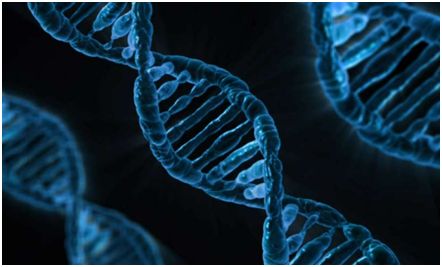While mentioning about Shape-shifter, you may regard it as science fiction stuff, however, they really exist in our DNA. In a new study, researchers describe how two commonly mismatched bases in human DNA - guanine (G) and thymine (T) - can change shape, and thus creating an inconspicuous crosspiece on the DNA ladder, which allows them to survive by evading the body's natural defense against genetic mutations. Related research results were published online in the journal of Nature.
Zucai Suo, a co-author of the paper and a professor of chemistry and biochemistry at Ohio State University, explained that ‘When these two bases accidentally form hydrogen bonds, they do not match well at first. They protrude from the DNA helix so that the enzymes used to replicate DNA can easily detect and repair them under normal circumstances. But sometimes, they will change shape before they are detected as if the two bases were ‘repaired’ with each other. So they can pair just like normal base pairs and escape from DNA repair mechanisms.’
Suo said, ‘They're bad guys, but they pretend to be good guys to survive.’
This discovery provides the basis for the study of other types of DNA mutations, where these types of mutations lead to disease as well as normal aging and even evolution.
The four bases that make up the DNA have their respective size and shape and should be paired together in the correct way. That is, adenine (A) is always paired with thymine (T) and cytosine (C) is always paired with guanine (G). These two "Watson-Crick" base pairings - A-T and C-G - constitute DNA sequences of all life we know. However, if G is mismatched with T in some way, then this will be a mutation.
In fact, the G-T mutation is the single most common mutation in human DNA. This mutation occurs about once in every 10,000 to 100,000 base pairs, which does not sound like a lot, but you have to consider that the human genome contains 3 billion base pairs.
Scientists would like to understand how mutations occur in order to better understand the many diseases they cause, such as cancer. This new study provides important information so that people can continue to make new progress in this area.
Although scientists have long speculated that G-T mismatches will change shape in order to resemble normal G-C or A-T, this phenomenon has never been observed directly before until Duke University biochemists used an MRI to reveal that these Watson-Crick similar G-T mismatches formed in so-called "naked" DNA under the leadership of Hashim M. Al-Hashimi.
However, there is still a question exists that how G-T mismatches. This is why Al-Hashimi contacts Suo and asks him to help determine the underlying biochemical mechanism.
‘An interesting question is: what determines the mutation rate in living organisms?’ Al-Hashimi said, ‘From there, we can begin to understand specific conditions that increase mismatches or environmental stress factors.’
Suo and Ph.D. student Walter Zahurancik used DNA polymerase (a DNA-replicating enzyme) to insert G-T mismatches into DNA strands. They were able to measure how efficiently this polymerase formed G-T mismatches through stopping this enzymatic reaction at different times and analyzing the resulting DNA molecules.
Al-Hashimi and Suo together determine that the G and T bases will be paired, but in an abnormal manner that protrudes from the DNA helix. Then, in less than a second, the two bases rearrange their chemical bonds so that they can quickly produce the shape of a normal base pair and decoy the polymerase to complete the chemical reaction. In short, they are camouflaged so that enzymes are less likely to detect them during DNA replication and repair.
It is a real feat for this mutation to survive because it has to overcome some basic physics limitations. The bases are paired in some way with the arrangement of protons and electrons that originate from their atoms. Also, the pairing requires a certain amount of energy, and the simplest, most energy-efficient pairing is the "correct" base pairing, that is, A-T and C-G. In fact, G-T pairings must overcome energy barriers to form and maintain themselves. It turns out that when G and T bases change shape, they make themselves more energy-efficient—although the efficiency is still lower than normal base pairing, it is also efficient enough.
For further study, these researchers will try to carry out similar experiments with another less common mutation - A-C mispairing.
Reference:
Kimsey I J, et al. Dynamic basis for dG•dT misincorporation via tautomerization and ionization. Nature, 2018, 554(7691):195.


